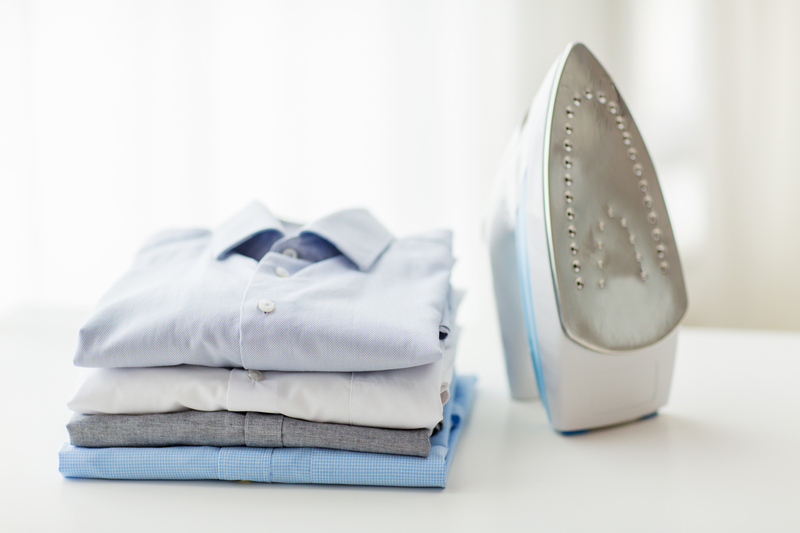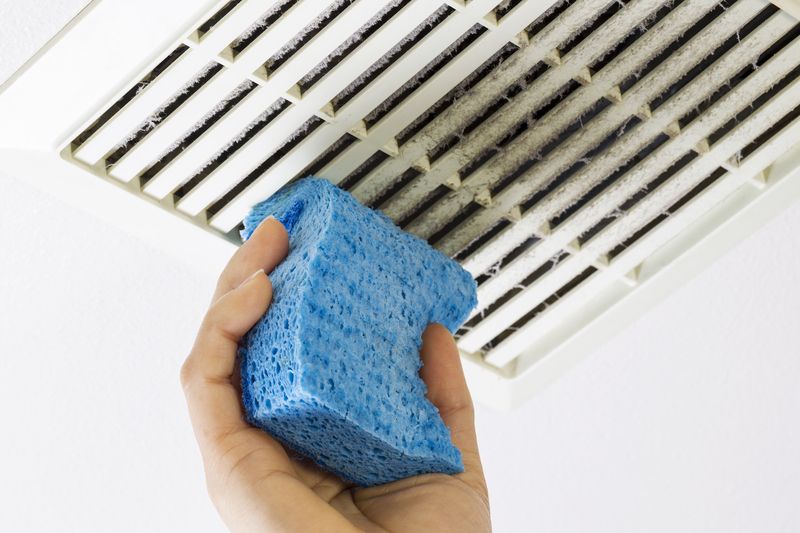Effortless Methods to Clean uPVC Window Frames
Posted on 13/08/2025
Effortless Methods to Clean uPVC Window Frames
Looking for the most effective ways to clean uPVC window frames? Whether your windows have faded from dazzling white to dull shades, or they've accumulated grime and dust from outdoor pollution, proper cleaning is key to restoring their appearance. uPVC window frames are known for their durability, low-maintenance, and sleek finish, but keeping them looking new does require some attention.
This comprehensive guide explores effortless methods to clean uPVC window frames easily and efficiently, using products you likely already have at home. Discover our tip-to-toe cleaning process, plus expert advice for removing tough stains, preventing long-term discoloration, and ensuring your uPVC frames look flawless for years to come.

Understanding uPVC Window Frames: Benefits & Cleaning Challenges
Unplasticized Polyvinyl Chloride (uPVC) has become the leading material for modern window frames, thanks to its weather-resistance, eco-friendliness, and longevity. Unlike wood, uPVC window frames neither rot nor need regular painting, making them an appealing choice for busy homeowners. But like any exterior surface, uPVC frames attract dust, grime, moss, and even mildew over time.
Why is Proper Cleaning Important?
- Preserves Aesthetic Appeal: Clean uPVC window frames massively improve your home's kerb appeal and indoor light quality.
- Extends Lifespan: Regular cleaning prevents surface erosion, discoloration, and stubborn stains, ensuring your window frames last longer.
- Boosts Functionality: Dirt in seals and hinges can impair opening/closing and reduce energy efficiency.
- Promotes Hygiene: Mold and algae that can grow in neglected frames may affect indoor air quality.
Effortless Cleaning Methods for uPVC Window Frames
Preparation: Gather Your Cleaning Supplies
Before you begin, assembling the right tools makes all the difference. For most effortless cleaning methods, you'll need:
- Soft microfiber cloths or sponges
- Bucket of warm water
- Mild liquid soap or gentle dishwashing detergent
- Soft-bristled toothbrush or detailing brush
- White vinegar or baking soda (for deeper cleaning)
- Squeegee (optional, for glass panes)
- Vacuum with nozzle attachment (for dust and cobwebs)
Step-by-Step Guide: Simple Routine Cleaning
1. Dust and Remove Cobwebs
- Start by opening the windows fully and vacuuming away loose dust, cobwebs, and debris from tracks, corners, and sills. A soft brush attachment helps reach crevices.
2. Wash the Frames with Soapy Water
- Add a few drops of gentle dish soap to a bucket of warm water. Dip a microfiber cloth and wring out excess water before wiping the uPVC frame surface from top to bottom.
- Avoid rough sponges or abrasive pads, which can scratch the smooth uPVC finish.
3. Pay Attention to Seals and Hinges
- Use your soft toothbrush or a dedicated small detail brush to gently scrub rubber seals, hinges, and locking mechanisms, removing grime build-up. This ensures frames close tightly and continue to keep out drafts.
4. Rinse and Dry
- Wipe all surfaces with a clean, damp cloth to remove soapy residue.
- Dry thoroughly with a new soft towel to avoid watermarks or streaks.
Alternative Cleaning Agents for uPVC Window Frames
Sometimes, mild soap and water aren't enough to tackle tough stains, nicotine discoloration, or algae marks. Here are some safe, effortless cleaning methods using household items:
- White Vinegar Solution: Mix equal parts vinegar and warm water in a spray bottle. Spritz onto the stained areas of your uPVC frames and leave for 10-15 minutes before wiping clean with a microfiber cloth. Vinegar's acidity dissolves mineral deposits, greasy marks, and mild mildew.
- Baking Soda Paste: For stubborn spots or dark stains, sprinkle baking soda onto a damp cloth, or make a paste with water. Rub it onto the dirty area, let it sit for a few minutes, and then wipe away with a clean, damp cloth. Baking soda is a gentle, non-abrasive way to lift grime.
- Specialist uPVC Cleaners: There are proprietary uPVC cream cleaners available at most DIY stores, specifically formulated for use on plastic window frames. Always follow manufacturer instructions and test on a small, hidden area first.
Advanced Techniques for Deep Cleaning & Restoration
How to Remove Yellowing and Tough Stains from uPVC
Over time, white uPVC window frames may develop yellow or brown stains due to exposure to pollution, sunlight, or nicotine. These require a little extra work:
- Magic Eraser: Slightly dampen a melamine foam 'magic eraser' and gently rub the stained areas. Magic erasers lift discoloration beautifully but use with caution and minimal pressure to avoid surface dulling.
- Hydrogen Peroxide: For heavy yellowing, apply a paste made from hydrogen peroxide and baking soda to the affected spot, cover with cling film, and let it sit for up to an hour. Remove and rinse thoroughly.
- Never use bleach, undiluted acetone, or harsh scouring powders on your uPVC window frames as these chemicals can corrode and permanently damage the surface!
Dealing with Mould, Mildew, or Algae
Dark, damp corners or windows facing north may be more vulnerable to mildew or algae buildup on the frames. For effective removal:
- Create a solution of one part white vinegar (or specialist anti-mould cleaner) to two parts water. Apply to the affected area and let sit for 20 minutes.
- Scrub gently with a soft brush or cloth, rinse thoroughly, and dry.
- Keep windows well-ventilated to prevent recurrence.
Polishing for Extra Shine
After thorough cleaning, some homeowners like to finish by buffing frames lightly with a clean microfiber cloth. If you desire extra sheen, choose a purpose-made uPVC polish or a drop of olive oil (test first!) to add luster. Don't use automotive polishes or waxes, as these can create a sticky residue.
Cleaning Coloured uPVC Window Frames
The methods above also apply to coloured uPVC window frames, which are sometimes finished with a foil or spray coating that can be more delicate than standard white plastic.
- Do not use abrasive tools, harsh chemicals, or spirit-based cleaners on coloured or woodgrain-effect uPVC, as these may strip the finish or cause patchy fading.
- Stick to mild soapy water, soft microfiber, and gentle techniques for coloured frames.
Easy Maintenance Tips to Keep uPVC Frames Looking New
How Often Should You Clean uPVC Window Frames?
Routine cleaning every 2-3 months is enough in most urban or rural settings. If you live near coastal areas, busy roads, or industrial zones, monthly cleaning may be necessary to prevent salty deposits or heavy pollution stains on your uPVC window frames.
Preventative Care for uPVC Frames
- Keep Gutters Clear: Overflowing gutters can streak muddy water onto window frames.
- Lubricate Hinges and Locks: Apply a little silicone-based lubricant to moving parts after cleaning to ensure smooth operation.
- Inspect Regularly: Check for cracks, gaps, or lifting rubber seals and repair promptly to maintain water-tightness.
- Avoid Stickers or Tape: Adhesives can leave stubborn, hard-to-clean residue on uPVC frames.
What Not to Use: Common uPVC Window Frame Cleaning Mistakes
To maintain the pristine look and durability of your uPVC window frames, always avoid:
- Scouring pads, steel wool, or rough sponges (can scratch and dull surfaces)
- Pure bleach, harsh commercial solvents, or nail polish remover (can cause yellowing or pitting)
- Colored cloths prone to bleeding dyes (may stain white or pale frames)
- Power washers up close (could force water into seals and damage structure)

Effortless Cleaning of uPVC Window Frames: Frequently Asked Questions
Can I safely clean uPVC window frames with household products?
Yes! Warm water, mild dish soap, white vinegar, and baking soda are all safe for cleaning uPVC. Avoid raw bleach, acetone, or abrasive scrubs.
What's the best way to remove mould from uPVC window frames?
A vinegar solution or an anti-mould spray left on for 15-20 minutes works for most minor cases. Always dry thoroughly after cleaning.
How do I restore faded or yellowed uPVC frames?
Try a melamine 'magic eraser' or a specialized uPVC cream cleaner for light yellowing. For heavier stains, hydrogen peroxide can help--but always test a hidden area first!
Is it okay to use window cleaning sprays on the frames?
Most glass cleaners are fine for panes, but avoid spraying directly onto uPVC frames as some alcohol-based solutions may dry out rubber seals or affect the finish.
Conclusion: Transform Your Home with Clean uPVC Window Frames
Regularly cleaning uPVC window frames is truly effortless with the right approach and a sprinkling of household know-how. Combining gentle soapy cleans with targeted stain-removal and ongoing care keeps your frames looking immaculate--enhancing both your home's beauty and your daily comfort. For more dramatic makeovers or renovation projects, always consult your window manufacturer's care advice before trying unfamiliar products.
Remember: Clean windows are about much more than just sparkling glass. Well-maintained uPVC frames can raise your property's value, reduce energy loss, and create a lighter, fresher living space. So, pick your preferred effortless method, set aside an hour or two, and enjoy the difference that clean uPVC window frames can make!
Key Takeaways:
- Use gentle, non-abrasive cleaners and soft cloths for best results on uPVC frames.
- Add white vinegar or baking soda to tackle stains, mould, or tough grime effortlessly.
- Avoid harsh chemicals and tools that might damage your uPVC window frames.
- Regular cleaning ensures your window frames stay brilliant, efficient, and long-lasting.
For more home maintenance tips, bookmark this page or share it with fellow homeowners. Effortless cleaning is just a few steps away!





